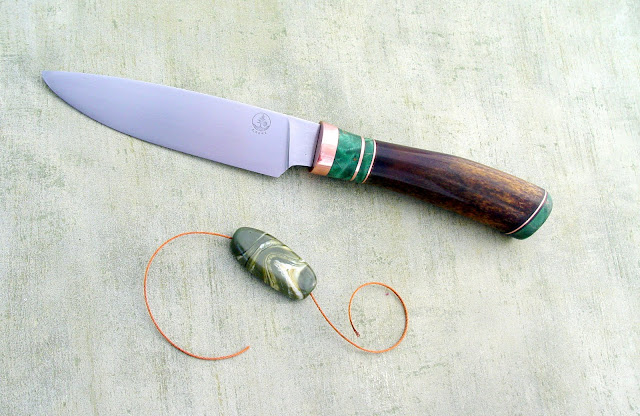John Juranitch actually advocates this type of "compound" beveling. As you guys mention, people neglect the need to thin out the primary angle--and like awestib said mostly for cosmetic reasons. So what he suggests is to grind in a "relief" angle that is at a very acute angle--clost to 10 per side, just barely above the actual blade grind in most cases. The real reason he advocates this "relief" grind is that if the user was just grinding on the same cutting-edge angle on top of say a full-flat blade grind, then over time the metal being removed at the same angle will just travel laterally up the blade, narrowing it up from edge to spine. The other effect of this is that it is also getting thicker behind the cutting edge over time. So that's why when you see an over-sharpened knife, it looks like someone was trying to make a really thick fillet knife

But anyway, the "relief" grind keeps the stock thin behind the edge, and then having the cutting-edge angle on top of that relief grind means you can just keep grinding on the same angle for quite a while and not worry about the actual blade stock getting too thick. Sooner or later you will gradually blend it over the relief grind, but then one just grinds on the relief grind again ( keeping the stock thin ) and can put back on whatever cutting-edge angle they want. The interesting thing is that Juranitch even suggests adding other additional bevels as you're mentioning. Lot of people say he's talking about microbeveling because it sounds like it, but as you're saying it's more like multi-faceted or compound bevels.
He also says that just sacrificing the "prettiness" of the edge and grinding on the primary blade grind itself is the best though. It's a pretty cool book, worth a read, although his views on things are pretty contrarian.
I do pretty similar to what you're talking about actually, but I have a pretty unorthodox method. I basically look down the surface of a hone, and then actually visually inspect the flushness of the bevel an apex of a knife edge to the hone in front of my face. It's pretttty awkward but man there is just no matching the type of control I get over it in terms of just refining the edge. It's also really quick when it comes to just maintenancing though, beacuse if I hold the edge perfectly flush with the hone, and then just by feel notch it up a little bit I can put in a tiny little microbevel. LIke you said I just do that each time the edges needs it until ultimately I have to grind in the overall edge angle again. Probably why my edges come out looking pretty convex.
You can spot what I'm talking about here if you look closely at the belly mid-way between tip and heel.





